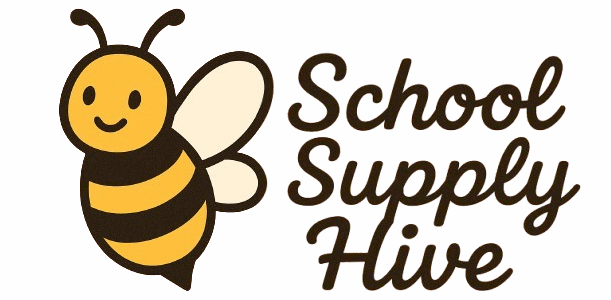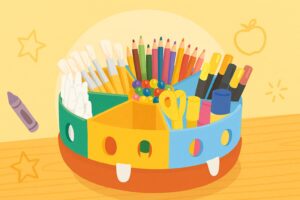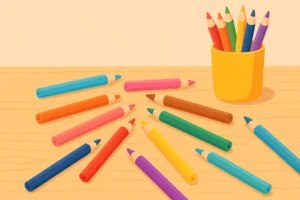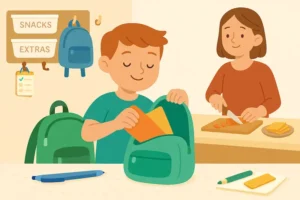How to Create a Calm Down Corner
Big emotions are a normal part of growing up. A calm down corner gives kids a predictable place to pause, breathe, and reset when feelings run high. This guide walks you through choosing a spot, stocking practical tools, and teaching routines so your calm down corner works in real life—at home, in a classroom, or anywhere kids learn.

What Is a Calm Down Corner?
A calm down corner is a dedicated space where children can step away to regulate emotions using taught strategies—breathing, movement, or sensory tools. It’s not a punishment. It’s a supportive routine that builds self-regulation over time. Research on social-emotional learning suggests that structured opportunities to pause and practice coping skills improve behavior and readiness to learn (see CASEL).
Benefits You’ll Notice
- More predictable responses to stress and frustration
- Less classroom disruption or home conflict
- Kids practicing strategies independently
- A shared language for emotions and choices
Step-by-Step: Build Your Calm Down Corner
1) Pick a quiet, visible location
Choose a spot that feels safe but still supervised—an alcove, a classroom corner, or a small pop-up tent. Avoid high-traffic zones and places that isolate the child. If space is tight, a portable bin or backpack can double as a “calm kit” you move where needed. For truly on-the-go setups, our product picks for school bags can help you keep basics together—see best kindergarten backpacks for back to school for durable, kid-friendly carriers.
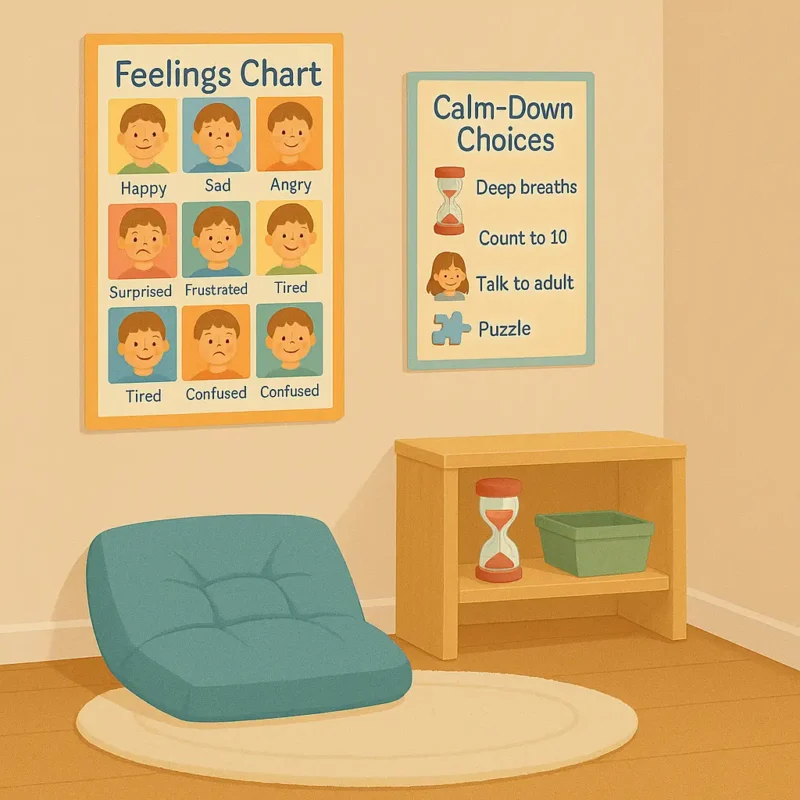
2) Add comfort without clutter
Keep it simple: a small rug or cushion, a beanbag, soft lighting, and one or two calming visuals (nature print, “First: Breathe” poster). Comfort supports regulation; clutter competes for attention. If you’d like students to sketch, reflect, or jot “what I’m feeling,” keep a small notepad or a stack of best sticky notes for school and office within reach to make quick writing low-pressure.
3) Stock 3–5 coping tools kids will actually use
Start small and rotate over time. Good options include:
- Visual breathing cards or a one-button timer for short breaks
- Fidgets (soft putty, a simple spinner, or a textured stone)
- Sensory bottle (sealed, with glitter and glycerin)
- Noise-reducing earmuffs for sound-sensitive kids
- Blank journal and a few sturdy pencils—see best pencils for 2nd grade for reliable, smudge-resistant leads
4) Teach routines with modeling
Show the sequence out loud: “I notice I’m tense. I’m choosing the calm down corner. I’ll breathe in for four, out for four, three times.” Post a tiny routine card:
1) Choose the corner → 2) Pick a tool → 3) Breathe or write → 4) Rejoin when ready
Short, consistent practice beats long, occasional sessions. Many families and teachers pair calm-down time with creative expression; if art helps your learner, you’ll find durable, age-appropriate options in our guide to best art supplies for 3rd grade students.
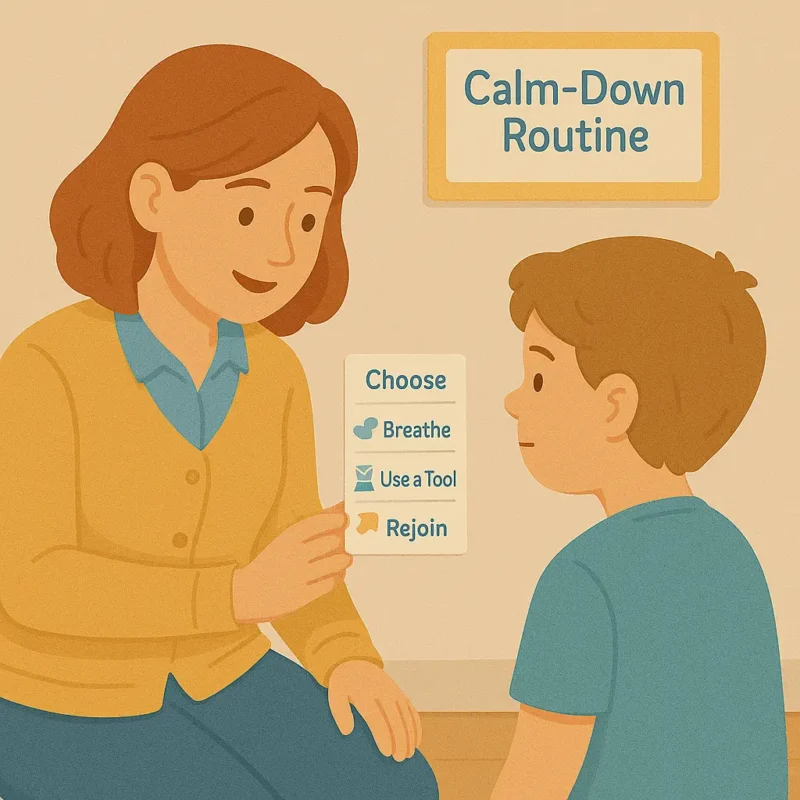
5) Set clear expectations—kind and firm
Agree on when to use the corner (before escalation or after a cue), how long to stay (often 5–10 minutes), and what “ready to rejoin” looks like. Avoid treating it as a reward or a punishment; it’s a skill-building support. For conversations that often feel tense, this companion guide can help: how to talk about grades without stress.
6) Keep materials organized for quick success
Label baskets by strategy: “Breathe,” “Write/Draw,” “Move/Stretch,” “Quiet.” Fewer choices reduce decision fatigue. Rotate one item each week to keep interest up. If your corner doubles as a creative spot, a small caddy with washable markers, glue, and scissors stays neater when tools fit the space—our grade-level picks in best art supplies for 3rd grade students include classroom-tested basics.
Troubleshooting Common Challenges
“My student treats it like playtime.”
Re-teach the routine. Keep choices limited. Use a short visual timer and a quick reflection (“What helped? What’s next?”). If movement helps, add a 30-second wall push or chair stretch before a seated tool.
“We don’t have space.”
Create a portable calm kit in a small bin or backpack: breathing card, fidget, journal, pencil, headphones. For sturdy, kid-sized carriers with easy zippers and pockets, see our picks for best kindergarten backpacks for back to school.
“Kids won’t choose it independently.”
Embed prompts in your day: a morning mindfulness minute, visual cues on desks, and positive narration (“I see you choosing a tool—great plan”). Start with co-regulation; independence follows practice.
Optional Add-Ons (Keep It Simple)
- Feelings wheel with 6–8 emotions (not 20)
- Quiet headphones for busy classrooms
- One creative outlet: sketch pad or sticky notes—our review of best sticky notes for school and office covers sizes that fit desk caddies
- Journal for brief reflections
Family & Teacher Collaboration
Share the same routine across home and school when possible. Use identical language on the routine card and swap short updates: which tool helped, how long the break lasted, and what support worked after. For broader SEL ideas and toolkits, explore Understood.org, a parent- and teacher-friendly resource hub.
Final Thoughts
A calm down corner works best when it’s simple, taught, and used consistently. Start with a quiet spot, add just a few tools, and practice the routine together. Over time, you’ll see more self-regulation, smoother transitions, and fewer conflicts.
Next, if you want quick wins for organizing the little supports that make this routine stick, try our classroom-friendly picks in best sticky notes for school and office and keep creative options stocked with best art supplies for 3rd grade students.
